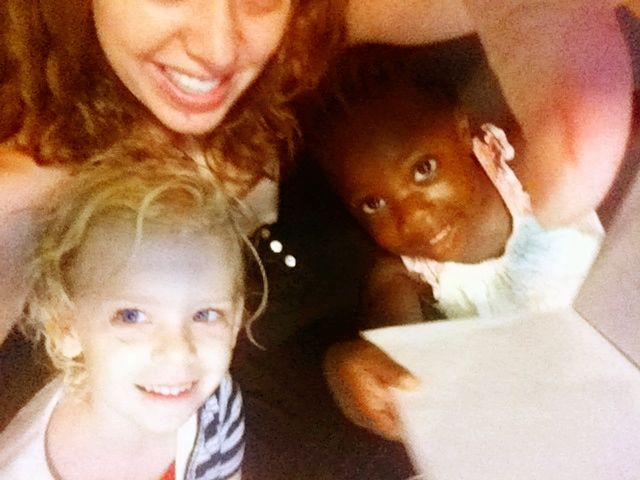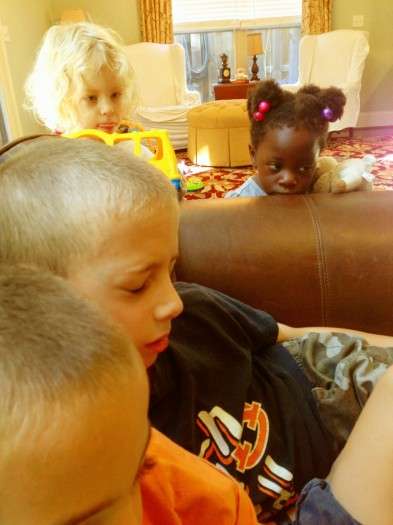By Andrew J Belotti
 The top three traits that an aspiring or a current school principal should demonstrate in order to become successful was difficult to narrow down as there were so many.
The top three traits that an aspiring or a current school principal should demonstrate in order to become successful was difficult to narrow down as there were so many.
From observations, experience and discussions with educators the number one trait was integrity. Young staff and students looked at the values that the principal demonstrated in their daily life. It didn't matter whether the principal was a primary or secondary educator, the discussions always came back to the point that integrity was something that they really claimed as a foundation. Everything they stood for revolved around integrity.
The second trait was one of support. Support in the principal's personal life and their constant support of staff and students. All agreed that support created stability. A stable support network around the school principal included their home life with their partner and family. It was strongly suggested that the result of support and the giving of support was the building block for intrinsic stability.
The third trait was consistency. The principal had to show consistency with what they were saying and what they believed in. The principal must demonstrate the direction they wanted to take the school. A shared and clearly articulated vision was very important. When that occurred decisions were easily made about the schools direction.
Experience showed that being a successful school principal did require the principal to know when to sit back and not say anything. Many principals said it was a skill that they had to really focus on. Most of my research in this area showed that principals only had to have a small opportunity and they were quick to give their opinion when it would have been better to have kept quiet and let discussion by the staff roll on instead of stifling discussion. The majority of principals mentioned that was the area they had to learn very quickly because when they saw that they didn't interrupt or voice their opinion in the early stages of discussion the staff remained engaged and felt that they were being heard. Discussion did not close down. My observations of inexperienced compared to experienced principals saw a tremendous contrast in that discussions turned to debates very early in meetings with the inexperienced principal compared to the experienced principal. The inexperienced principal seemed at a loss when staff didn't contribute to discussions. The experienced principal let the diverse and free ranging ideas and opinions flow. Experienced school principals said that the quicker the inexperienced principal learned to remain quiet the better for him or her.
There were many good things about being a school principal. The principal had the ability to implement the things that he or she truly believed in. Principals who had a strong belief that the social and emotional well-being of students was as important as their academic ability, ensured that there was always a focus on social and emotional well-being. The principal had the opportunity to have a big picture understanding of education. It allowed them to keep more up-to-date with contemporary thought and practice. They had more professional development opportunities. It gave them a good understanding of the directions of their education system and systems around the world.
The successful school principal did many positive things with children. A principal holds a lot of positional power and most of the students hold them in high esteem. For student orientated principals it was very uplifting walking around the school and interacting with students. It was very important that principals knew their students as people.
To read more about what it takes to become a successful school principal, click http://www.andrewbelotti.com/index.php?p=1_10_School-Principal.
From observations, experience and discussions with educators the number one trait was integrity. Young staff and students looked at the values that the principal demonstrated in their daily life. It didn't matter whether the principal was a primary or secondary educator, the discussions always came back to the point that integrity was something that they really claimed as a foundation. Everything they stood for revolved around integrity.
The second trait was one of support. Support in the principal's personal life and their constant support of staff and students. All agreed that support created stability. A stable support network around the school principal included their home life with their partner and family. It was strongly suggested that the result of support and the giving of support was the building block for intrinsic stability.
The third trait was consistency. The principal had to show consistency with what they were saying and what they believed in. The principal must demonstrate the direction they wanted to take the school. A shared and clearly articulated vision was very important. When that occurred decisions were easily made about the schools direction.
Experience showed that being a successful school principal did require the principal to know when to sit back and not say anything. Many principals said it was a skill that they had to really focus on. Most of my research in this area showed that principals only had to have a small opportunity and they were quick to give their opinion when it would have been better to have kept quiet and let discussion by the staff roll on instead of stifling discussion. The majority of principals mentioned that was the area they had to learn very quickly because when they saw that they didn't interrupt or voice their opinion in the early stages of discussion the staff remained engaged and felt that they were being heard. Discussion did not close down. My observations of inexperienced compared to experienced principals saw a tremendous contrast in that discussions turned to debates very early in meetings with the inexperienced principal compared to the experienced principal. The inexperienced principal seemed at a loss when staff didn't contribute to discussions. The experienced principal let the diverse and free ranging ideas and opinions flow. Experienced school principals said that the quicker the inexperienced principal learned to remain quiet the better for him or her.
There were many good things about being a school principal. The principal had the ability to implement the things that he or she truly believed in. Principals who had a strong belief that the social and emotional well-being of students was as important as their academic ability, ensured that there was always a focus on social and emotional well-being. The principal had the opportunity to have a big picture understanding of education. It allowed them to keep more up-to-date with contemporary thought and practice. They had more professional development opportunities. It gave them a good understanding of the directions of their education system and systems around the world.
The successful school principal did many positive things with children. A principal holds a lot of positional power and most of the students hold them in high esteem. For student orientated principals it was very uplifting walking around the school and interacting with students. It was very important that principals knew their students as people.
To read more about what it takes to become a successful school principal, click http://www.andrewbelotti.com/index.php?p=1_10_School-Principal.
You have read this article with the title November 2012. You can bookmark this page URL http://educationarticlesfromexperts.blogspot.com/2012/11/what-it-takes-to-become-successful.html. Thanks!

























